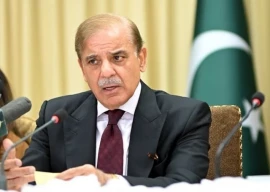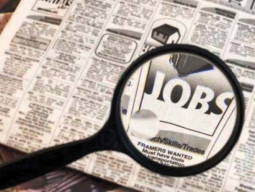
The Pakistan Tehreek-i-Insaf (PTI’s) announcement of its economic plan is a welcome development and indicates increasing maturity of Pakistan’s political space. It has opened up discourse on a mainstream party’s thinking on issues that really matter to the common man.
Delving into the details of the plan, it is not surprising to find a strong liberal agenda at its core. There are, nevertheless, important gaps in the PTI’s policy from a centrist’s viewpoint. Its key weakness is the lack of attention paid by the PTI’s economic think-tank to actual policy details and their implications.
For instance, under the fiscal balance rule – which implies that the government budget deficit remains constant at the current level – every additional rupee spent has to be matched by incoming revenue. Even if we assume that the tax-to-GDP ratio can be increased to 15% of GDP from less than 10% currently, the extra government spending envisaged under PTI’s welfare program implies that the currently precarious fiscal situation will not improve at all.
This implies that clear spending priorities have to be laid out; ie, which part of government expenditures will be cut to finance the difference. This is an important point, in my view, which has been totally ignored. Indeed, this is even more relevant if the promise of reducing the fiscal deficit to 4.5%, from more than 8% currently, is to be achieved. Such a target, if set out over five years, implies a minimum drag of 1.5 percentage points of GDP per year, assuming a very low fiscal multiplier.
Moreover, the more populist measures, such as demolition of Prime Minister houses, etc, will do little to improve the fiscal situation. Indeed, a better idea would be to utilise them as hospitals or schools, thus avoiding destruction of useful capacity. On this front, usefulness of productive office space for government officials needs to be recognised as well, before promising a largely populist measure with no genuine economic benefit.
Another important point is the lack of details on the level and nature of taxes envisaged under the revenue generation plan. Bringing the agricultural sector in the tax loop is key, and so is reduction of indirect taxation and its replacement with direct sources to reduce economic distortions. However, studies around the world show that implementation of tax policies is often a tricky issue, and here the solutions proposed by PTI are very likely to run into institutional constraints.
In this area, further details on implementation, in order to show credible political willingness to carry out taxation reforms, are more important than reiterating the principle itself.
Expansion of the welfare state; with associated negative implications for the fiscal balance and, in turn, public sector debt; and rising investment spending are inherently inconsistent over the short-term. This will do little to reverse the crowding-out of the private sector, which is occurring in the economy currently.
Moreover, the deteriorating law and order situation and a very weak infrastructure base are clear constraints on the supply side, and will again need detailed policy actions rather than just headline comments. Specifically, there is a strong role for the private sector to play on the infrastructure side, and a very liberal agenda is a potential hindrance here. Looking at the experience of other emerging economies, a sharp rise in investment ratios has often come alongside liberalisation of the financial sector and enhanced credit provision; which, as we know now, can lead to asset bubbles with devastating consequences for future growth if not handled properly. The projected investment boom requires careful policy calibration, with a focus on efficient allocation of resources preferably via the capital markets – therefore, the plan looks overly optimistic and lacking details on plausible drivers.
More broadly, generating an investment boom in Pakistan would require significant strengthening of institutions and the deregulation of key sectors. However, looking at other aspects of the economic plan, these pro-investment conditions are, to a certain extent, internally inconsistent with PTI’s view on probing potentially confidence-sapping scandals and corruption cases. For instance, consider India’s struggle with the Coalgate scandal, which led to capital flight from the country.
Experiences of other countries show that political instability tends to be highly correlated with inferior economic outcomes. Here, the PTI will soon need to prioritise the battles it wants to pick once it comes to power. As such, PTI’s strong emphasis on accountability of legacy corruption appears irrelevant (and highly populist) when judged against the greater goal of securing a brighter economic future, given the distraction and negative confidence contagion it will generate.
It must be noted that current changes in the global landscape have opened up a golden opportunity for Pakistan in the external trade sector. The sharp rise in Chinese labour costs is increasingly making Chinese products uncompetitive, thus opening space for Pakistani exporters. Increasing exports has been a broad policy mantra of all regimes: however, the sad fact is that Pakistan has made little progress on this front – despite the existence of excess labour. It is reasonable in this context to question PTI’s headline target. In this area, a detailed plan of incentives needs to be articulated in order to reconnect Pakistan’s export sector with the world.
Strengthening of the regulatory framework, however, needs to be appreciated. Nonetheless, a balance will be required so as not to depress genuine activity. Stronger implementation of common sense rules will require a combination of strong legislative frameworks and robust implementation regimes. Here, a purely ‘moral high ground’ driven approach is unlikely to be enough and will need specific designing of incentives and punishments to ensure adequate compliance in light of spending plans.
The plan is a step in the right direction, but needs further thinking on several important fronts. A number of emerging countries have managed to engineer sharp increases in their growth rates over the last 12 years, despite having no tangible resource export base. In most instances, the drivers of such sustained growth trajectories have been strong institutions, pro-reform governments, enhanced productivity of the labour force and supportive demographics.
There is no reason why Pakistan cannot do the same.
THE WRITER IS HEAD OF GLOBAL MACROECONOMICS FOR EDF TRADING (ONE OF EUROPE’S LARGEST COMMODITY MERCHANTS). PREVIOUSLY, HE HAS WORKED AS A GLOBAL MACROECONOMIST FOR GOLDMAN SACHS INTERNATIONAL
Published in The Express Tribune, September 17th, 2012.
COMMENTS (15)
Comments are moderated and generally will be posted if they are on-topic and not abusive.
For more information, please see our Comments FAQ

















@touseef: Remember odious loans.
Nice article but you have missed 2 major rea of cost saving 1st multibillion corruption going on every year and 2nd one is billion of dollars being consumed by white elephants due to mis-manageent if these things are forced to reduce on constant basis we can save a lot of amount to manage deficit.
PTI has created healthy discussion and came out as a strong third force with plans that economist are discussing at a length. It has broken the bondage of two parties system with turns and no option for new comers. It goes strong in favour of PTI and that is why we will vote PTI.
I am someone who knows a little about economics and I will say this is one of the better things Ive read on the ET related to economics, which isnt saying a lot but is saying something. I have some major points to make: 1. The demolision you mention is incorrect. I heard of these buildings being converted into colleges/schools/universities/libraries. Its obvious demolishing such infrasture is retarded beyond comprehension. I think you are misguided on this since I didnt notice anything like that in the economic plan. 2. The whole thing about a fiscal multiplier being greater than 1 is a myth. Numerous studies have looked at this and any serious study has come up with a figure less than one UNLESS you look at isolated projects that require the inherent ability of the government to undertake projects that can not be taken by private firms. For this the example of a big dam like Diamer Basha or Kalabagh comes to mind. Only a federal government can twist the arm of the stakeholders to get this done. So Governments should undertake such project and these would have a fiscal multiplier greater than 1 but as far as income support, unemployment benefits and all that, they are very inefficient and dont spur up economic activity at all. 3. You mention quickly that implementation is missing from the plan. This is what the whole critique should be rather than assuming their policies can be implemented. Raising the tax-GDP ratio by 5 % is impossible! Its just not pragmatic. So talking about what might happen in that case, IMO, is wasted space. 4. My take on the PTI plan would be similar to your in one respect: At least our politics is maturing to a point that people are coming up with some sort of plan. Apart from that, this is a plan I could have come up with overnight because it is a bunch of fluff and nothing else. The hardest work of planning in economics is making things hang together in different regards and showing the accounting of the specific plans. That is missing and that to me shows that PTI, although did some good with printing words in a pdf, did so in the least useful way possible. It is not surprising since in Pakistan economic teams are not made pre-election but post-win. PTI lacks serious economic planners and this 'economic plan' shows that. This is definitely something Asad Umar came up with himself after chatting with people. I expect a lot more of an 'economic' plan because precision is key to make me believe there is actually a plan and not just talk.
Nice article. One disagreement, the maturity hasn't been seen in Pakistan's political space as only one party is openly discussing it's policies and that's PTI. Rest of the parties are playing the same dirty politics of the 90s and 00s.
So give credit where it's due.
@Adnan Siddiqi:
U forgot the CIA / Mossad / Jewish lobby......
As if the other parties have some economic plan anywhere close to this. This is the only party which has an economic plan for the country rather than itself.
Stay clear of bankers advice esp Goldmanites. Look what they did to US & Europe.
PTI is lending its shoulder to an Economic Road Map prepared by spooks at Aabpara and the Planning Division of GHQ.
Good critique. One thing the writer mentions about "destruction" of PM and CM, Governor houses is not true. PTI's plan includes bringing down the walls of these places and converting them into public spaces which could be sports grounds, libraries, educational institutions etc. as the author points out. IK has said the same many times...
Salman-Very well written analysis. As far as your first concern on the fact that since every incoming rupee will be spent, it will not improve the fiscal situation, I think that out of 9% fiscal space created, only 5.5% is planned for spending, rest is expected to be lead to reduction of fiscal deficit. Second concern you have highlighted is the potential contraction in economy because of reduction in fiscal deficit, where it seems like you are assuming a fiscal multiplier of about 2? I think an alternate way to look at it would be savings in terms of future debt servicing costs, reduced inflation, and lower cost of capital because of lesser crowding out. Since our debt composition is shifting heavily towards internal debt anyways, this saved capital can be used towards stimulation of private sector, which means net contraction in economy will be smaller than anticipated. Lastly, regarding the populist measures, I agree with you, but again, this is all symbolic and of course, PTI understands that it does not have an economic value of its own. It is just a signal to gain further credibility so that enough political mileage can be attained to push through tough politico-economic decisions.
*why do people become smart...
Excellent article, its good to finally see a public debate in the media on the real issues of the people......
this is all we need step in right direction to fix the issues.
Read it to the point, where you said, Demolition of PM house, rest not interested. No one said anything about demolition, PTI has been saying that all the walls of Governor Houses and PM houses will be demolished to open up the buildings. The grounds attached to these buildings will be made public parks and the buildings Institutions.